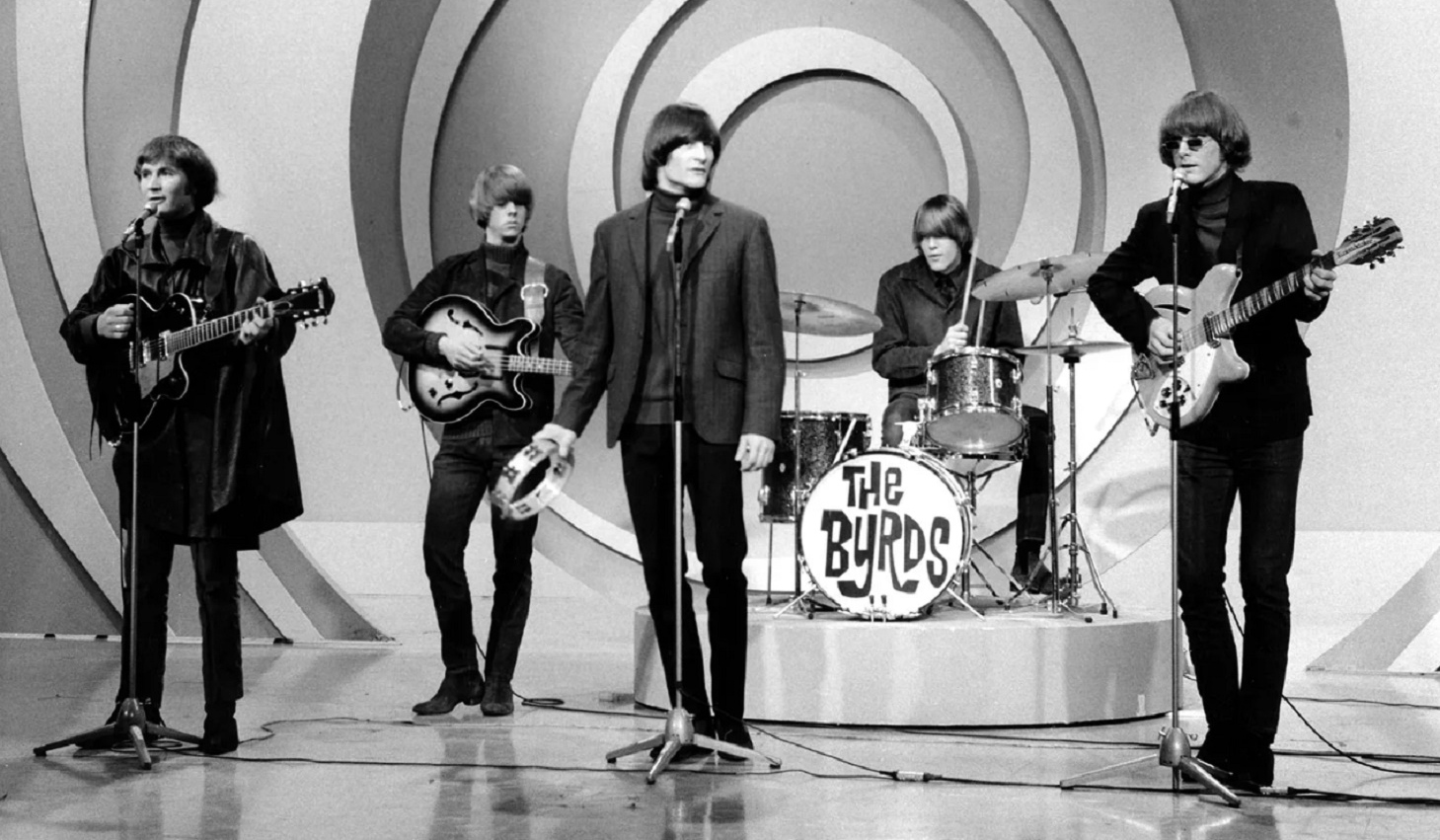Album Essentials: The Byrds - "Turn, Turn, Turn" (1965)

By Dave Swanson - Summit FM Contributor
When the Byrds burst upon the music world in the summer of 1965, it was a sound of freshness, of a new direction, a new future that would last far longer than any trend of the day known as “folk rock.” With folk music as their roots, the members of the Byrds were well schooled in that tradition, but like most young musicians of the era, were equally gazing into the future, and taking a hard look at the present to see where they could go. Pop music was on a jet‑fueled path to wherever an artist wanted to take it, or so it seemed.
The two obvious planets that collided to help the Byrds become the Byrds were the arrival of the Beatles on U.S. shores in 1964, and the arrival of Bob Dylan into their universe. By merging elements of these two worlds, Roger McGuinn, David Crosby, Gene Clark, Chris Hillman and Michael Clarke would create their own sound, made up of ingredients from both, and that sound they created would go on to influence and inspire countless other musicians for decades to come.
The Byrds released their interpretation of Dylan’s poetic masterpiece, “Mr. Tambourine Man,” in the spring of 1965 to unanimous love that pushed the single to No. 1 in short order. “Folk rock” may have seemed a passing fad at the time. The number of folkies who suddenly plugged in, or the beat groups who rapidly became interested in lyrical content and ideas beyond boy meets girl, was mammoth. From the Turtles and Sonny & Cher to the Mamas & the Papas and Buffalo Springfield, a jingle‑jangle morning had risen everywhere. Dylan himself had already “gone electric” a few months earlier with the landmark “Subterranean Homesick Blues,” but this Byrds take on a classic Dylan was simply pop perfection, and the world took notice.
The Byrds were hardly a one‑trick pony, as that debut LP was crammed full of brilliant songs penned mostly by singer Gene Clark, along with some help from Roger (Jim) McGuinn. Suddenly the Byrds were thrust into the spotlight and Columbia Records wanted more, so the band headed back into the recording studio at the end of summer 1965 to nail down their follow‑up.
Completed in around two months and released in November, “Turn! Turn! Turn!” picked up where “Mr. Tambourine Man” left off, with the band continuing down that folk‑rock path, merging traditional with the new. A couple more Dylan songs, a couple traditional folk standards re‑arranged Byrds style and more from Clark and McGuinn—the album is less focused than its predecessor, but still totally captivating. The single “Turn! Turn! Turn!” was based on a Pete Seeger arrangement of the folk standard with text in the Book of Ecclesiastes. McGuinn came up with the arrangement and suddenly, it was a Byrds song! As it became a modern‑day folk‑rock classic, it scored the Byrds another No. 1 single.
“It Won't Be Wrong” and “The World Turns All Around Her” were two more instant Byrds classics. Another Gene Clark gem, “She Don’t Care About Time,” was left off the album but was issued as a non‑LP single that fall. The LP hit No. 17 in the U.S. and No. 11 in England. Within two years, with various line‑up changes, the band was barely recognizable from their 1965 incarnation, while their sound and style continued to evolve and change.
The Byrds are, in my opinion, one of the most significant bands of all time, and as I write this in 2025, they seem all but forgotten. Their influence and inspiration can be directly traced to bands like R.E.M., Wilco, the Lemon Twigs and countless others. The entire “jangle rock” world of the early 1980s was built on Byrds riffs, while their country phase with Gram Parsons was ground zero for all that became “Americana.”
Any of the first five Byrds albums is a good place to start your listening adventure—just do yourself a favor, and don’t forget the Byrds!!






